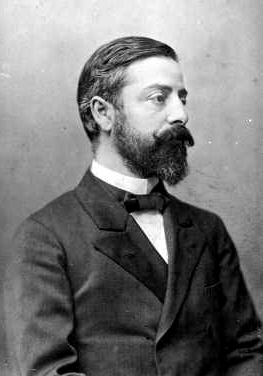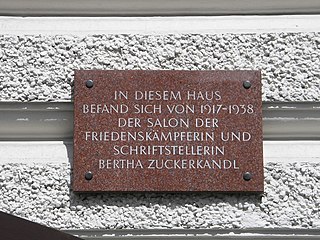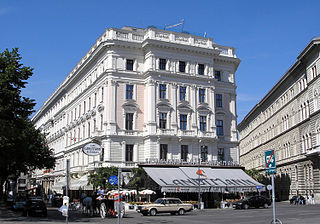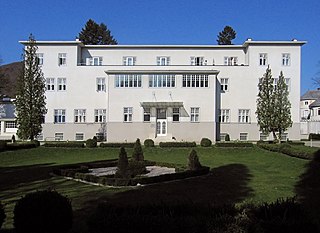The molecular clock is a figurative term for a technique that uses the mutation rate of biomolecules to deduce the time in prehistory when two or more life forms diverged. The biomolecular data used for such calculations are usually nucleotide sequences for DNA, RNA, or amino acid sequences for proteins.

Chromaffin cells, also called pheochromocytes, are neuroendocrine cells found mostly in the medulla of the adrenal glands in mammals. These cells serve a variety of functions such as serving as a response to stress, monitoring carbon dioxide and oxygen concentrations in the body, maintenance of respiration and the regulation of blood pressure. They are in close proximity to pre-synaptic sympathetic ganglia of the sympathetic nervous system, with which they communicate, and structurally they are similar to post-synaptic sympathetic neurons. In order to activate chromaffin cells, the splanchnic nerve of the sympathetic nervous system releases acetylcholine, which then binds to nicotinic acetylcholine receptors on the adrenal medulla. This causes the release of catecholamines. The chromaffin cells release catecholamines: ~80% of adrenaline (epinephrine) and ~20% of noradrenaline (norepinephrine) into systemic circulation for systemic effects on multiple organs, and can also send paracrine signals. Hence they are called neuroendocrine cells.
Zuckerkandl is a surname. Notable people with the surname include:
Émile Zuckerkandl was an Austrian-born French biologist considered one of the founders of the field of molecular evolution. He introduced, with Linus Pauling, the concept of the "molecular clock", which enabled the neutral theory of molecular evolution.

Emil Zuckerkandl was a Hungarian anatomist.

Berta Zuckerkandl-Szeps was an Austrian writer, journalist, and art critic.

The Salon of Berta Zuckerkandl-Szeps existed in Vienna from the end of the 19th century until 1938. It was located in her Viennese residence in the Palais Lieben-Auspitz on the Ringstraße.

Palais Lieben-Auspitz is a Ringstraßenpalais in Vienna, Austria, located in the city's Innere Stadt. Situated on the street level is Café Landtmann.

The organ of Zuckerkandl is a chromaffin body derived from the neural crest located at the bifurcation of the aorta or at the origin of the inferior mesenteric artery. It can be the source of a paraganglioma.

The subcallosal area is a small triangular field on the medial surface of the hemisphere in front of the subcallosal gyrus, from which it is separated by the posterior parolfactory sulcus; it is continuous below with the olfactory trigone, and above and in front with the cingulate gyrus; it is limited anteriorly by the anterior parolfactory sulcus.

Portrait of Adele Bloch-Bauer I is an oil painting on canvas, with gold leaf, by Gustav Klimt, completed between 1903 and 1907. The portrait was commissioned by the sitter's husband, Ferdinand Bloch-Bauer, a Viennese and Jewish banker and sugar producer. The painting was stolen by the Nazis in 1941 and displayed at the Österreichische Galerie Belvedere. The portrait is the final and most fully representative work of Klimt's golden phase. It was the first of two depictions of Adele by Klimt—the second was completed in 1912; these were two of several works by the artist that the family owned.
Faith Hubley was an American animator, known for her experimental work both in collaboration with her husband John Hubley, and on her own following her husband's death.

The Sanatorium Purkersdorf was built as a sanatorium in Purkersdorf, Wien-Umgebung, Lower Austria. It was built in 1904-05 by the architect Josef Hoffmann for the industrialist Victor Zuckerkandl and is an example of the style of the Viennese Secession in architecture.
The history of molecular evolution starts in the early 20th century with "comparative biochemistry", but the field of molecular evolution came into its own in the 1960s and 1970s, following the rise of molecular biology. The advent of protein sequencing allowed molecular biologists to create phylogenies based on sequence comparison, and to use the differences between homologous sequences as a molecular clock to estimate the time since the last common ancestor. In the late 1960s, the neutral theory of molecular evolution provided a theoretical basis for the molecular clock, though both the clock and the neutral theory were controversial, since most evolutionary biologists held strongly to panselectionism, with natural selection as the only important cause of evolutionary change. After the 1970s, nucleic acid sequencing allowed molecular evolution to reach beyond proteins to highly conserved ribosomal RNA sequences, the foundation of a reconceptualization of the early history of life.

The Journal of Molecular Evolution is a monthly peer-reviewed scientific journal that covers molecular evolution. It is published by Springer Science+Business Media and was established in 1971. The founding editor was Emile Zuckerkandl, who remained editor-in-chief until the late 1990s. In 1994, the journal became associated with the then existent International Society of Molecular Evolution.
Zuckerkandl's tubercle is a pyramidal extension of the thyroid gland, present at the most posterior side of each lobe. Emil Zuckerkandl described it in 1902 as the processus posterior glandulae thyreoideae. Although the structure is named after Zuckerkandl, it was discovered first by Otto Madelung in 1867 as the posterior horn of the thyroid. The structure is important in thyroid surgery as it is closely related to the recurrent laryngeal nerve, the inferior thyroid artery, Berry's ligament and the parathyroid glands. The structure is subject to an important amount of anatomic variation, and therefore a size classification is proposed by Pelizzo et al.

Otto Zuckerkandl was an Austro-Hungarian urologist and surgeon. He was a younger brother of anatomist Emil Zuckerkandl (1849–1910).
Zuckerkandl! is a comic book published in 1968. It was written by Robert Maynard Hutchins and illustrated by John Hubley. The book profiles the philosophy of the fictitious Austrian thinker Dr. Alexander Zuckerkandl and satirizes his philosophy of disentanglement. Resembling a fairy tale in form, Zuckerkandl! has been interpreted as a parody of Freud, though it explicitly contrasts the philosophy of Freud with the philosophy of Zuckerkandl. As such, it blames Zuckerkandl for the ills of modern society. The comic book also has an animated film version, directed by John Hubley.
The Zuckerkandl's tubercle is a small cervical tubercle at the mesiobuccal crown margin of maxillary and mandibular deciduous first molars over the mesial root. It is one of the key identifying features of the teeth. The tubercle is always present, regardless of age or ethnicity
Zuckerkandl's tubercle may refer to:










